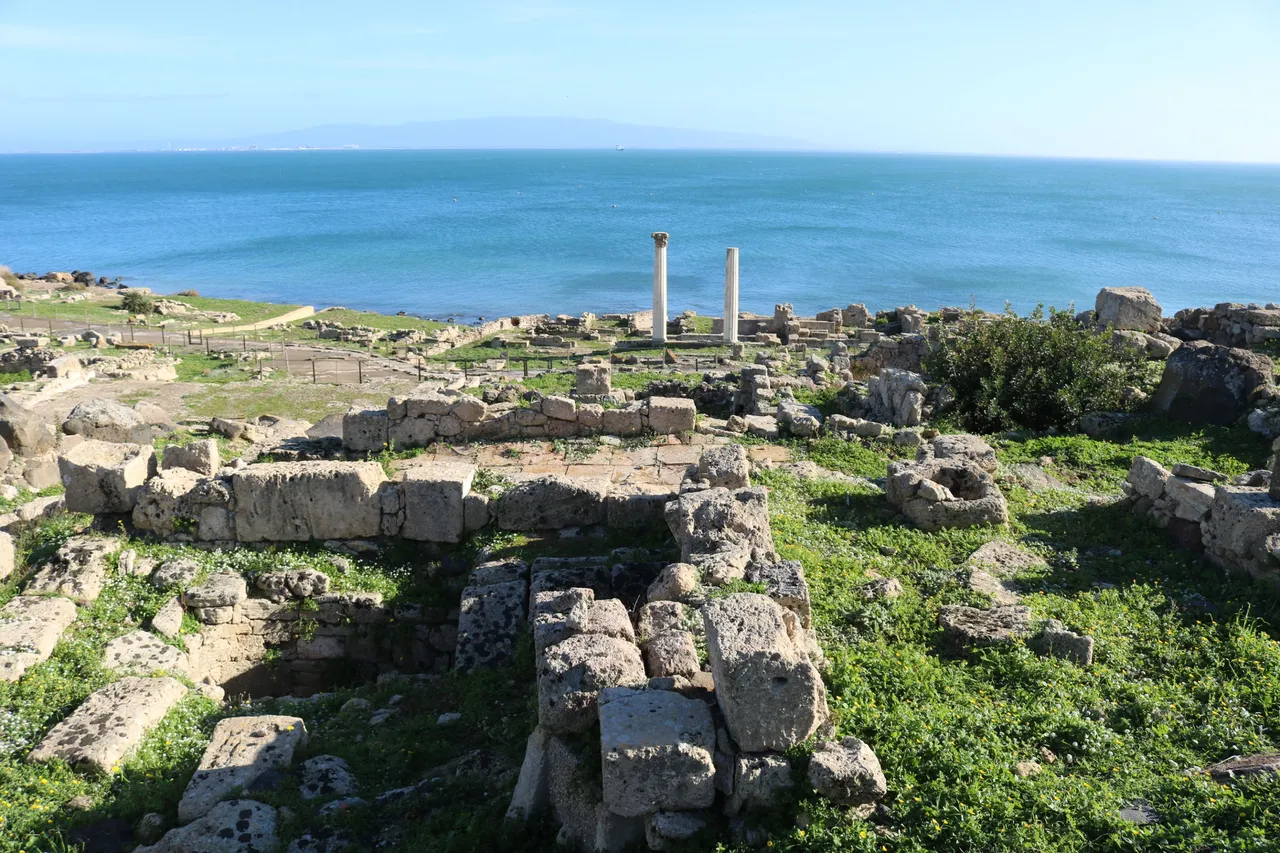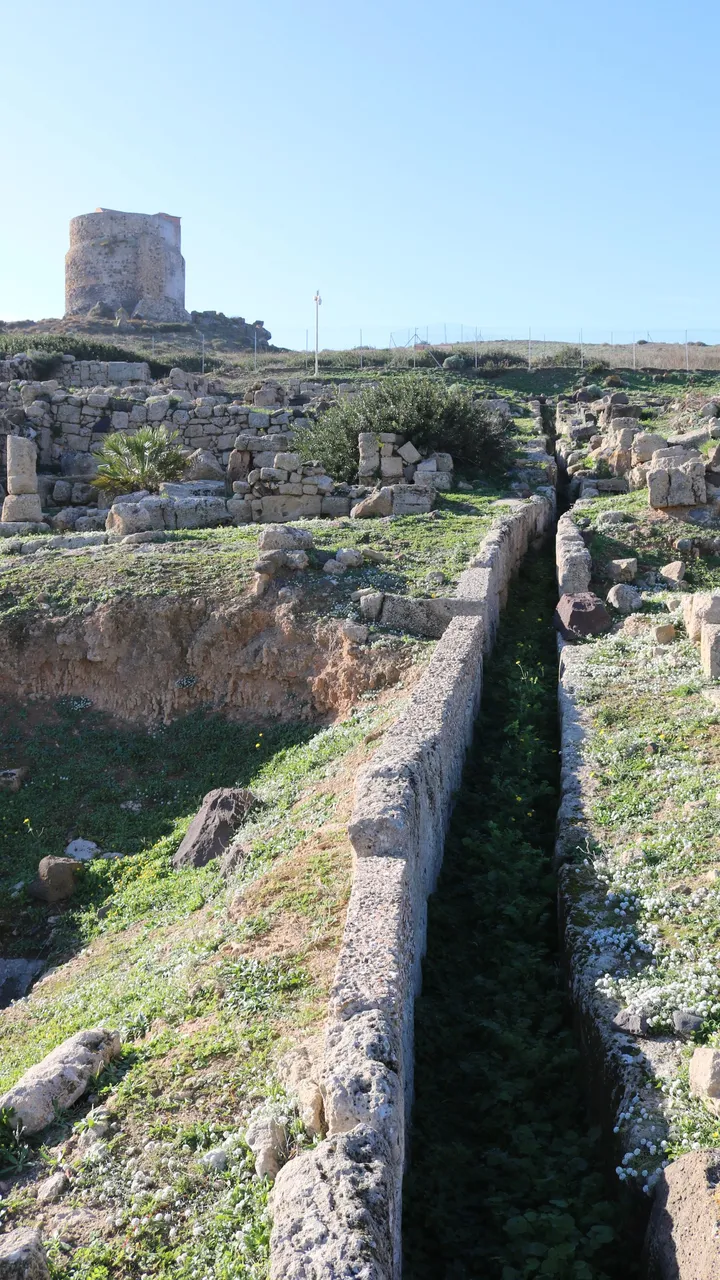
Ciao, Hive family! ✌️
Today I bring you to a new place from my island, Sardinia. I've been here recently with another member of this community, Fabio, which is a fraternal friend from my childhood.
We took the car in a Sunday morning and reached Tharros, a very ancient and suggestive place in the central-western coast of Sardinia, a strip of land kissed by the Mediterranean Sea and the Mistral, a strong wind blowing from North-West.
This place was already habitated by Nuragic people, warriors and sailors, when Phoenicians landed in Sardinia in the VIII century BC. Phoenicians were pacific traders and they got fully integrated in this island, bringing wealth and innovations. Six centuries later, in 238 BC, Sardinia was conquered by the Romans. For this precise reason, the remains you're going to admire now are mostly related to the Roman period.


I have something to confess about these two columns. They look nice, don't they? You will find out the truth at this end of this article...


This large and solid building played a fundamental role. It's called castellum acquae (castle of waters): an immense water supply for the citizens.

Now look at these two pictures: what do you think they were? Giving you a little clue, they are also related to water...

...thermal baths! Tharros citizens used to come to these complexs to take a bath, wash up, relax and socialize. In general, all the citizens were admitted to this place, with no distinctions of wealth and social class.


The Nuragic village
The first human settlement in this area is a 4000-5000 year old stone village built by Nuragic civilization. Located on the highest part of the area, overlooking the sea and the land, enabled the villagers to spot in advance every incoming ships.



Tharros: slow decay and tragic destiny
After the fall of Roman Empire, Sardinia got occupied by the Vandals and taken over by the Byzantines; but they slowly lost their dominions in Western Europe, and Sardinia experienced a few centuries of effective independence.
However, Tharros remained helpless in front of the frequent attacks by Saracen pirates, which slowly convinced the inhabitants to move inland. Historians believe the city was definitively abandoned around 1050 AC.
Many centuries later, after conquering Sardinia, the Spanish kingdom decided to solve this problem building a massive defensive system with numerous towers manned by soldiers and cannons, in order to protect this stretch of coast, too easy landing place for enemies.




 Views from different sides of the tower, on the top of the hill.
Views from different sides of the tower, on the top of the hill.
Now, I promised to tell you the truth...
...the columns are fake!

The original ones were destroyed along the centuries, but it's said that some archaeologists built secretly these fake columns in order to prove they were getting visible results, otherwise they wouldn't have obtained the necessary funding to dig the remaining part of the city. Despite this funny trick, still nowadays a large part of Tharros lies underground.

As always, thank you for your attention and your time. Your support is precious and I hope you enjoyed this travel. If you have questions or something to share with me, you can find me in the comments 🙏
Also, I highly recommend you to follow my friend, Fabio. He's a great traveler and inspired me a lot with his experiences and his attitude. You can find his profile here!
See you on the road!